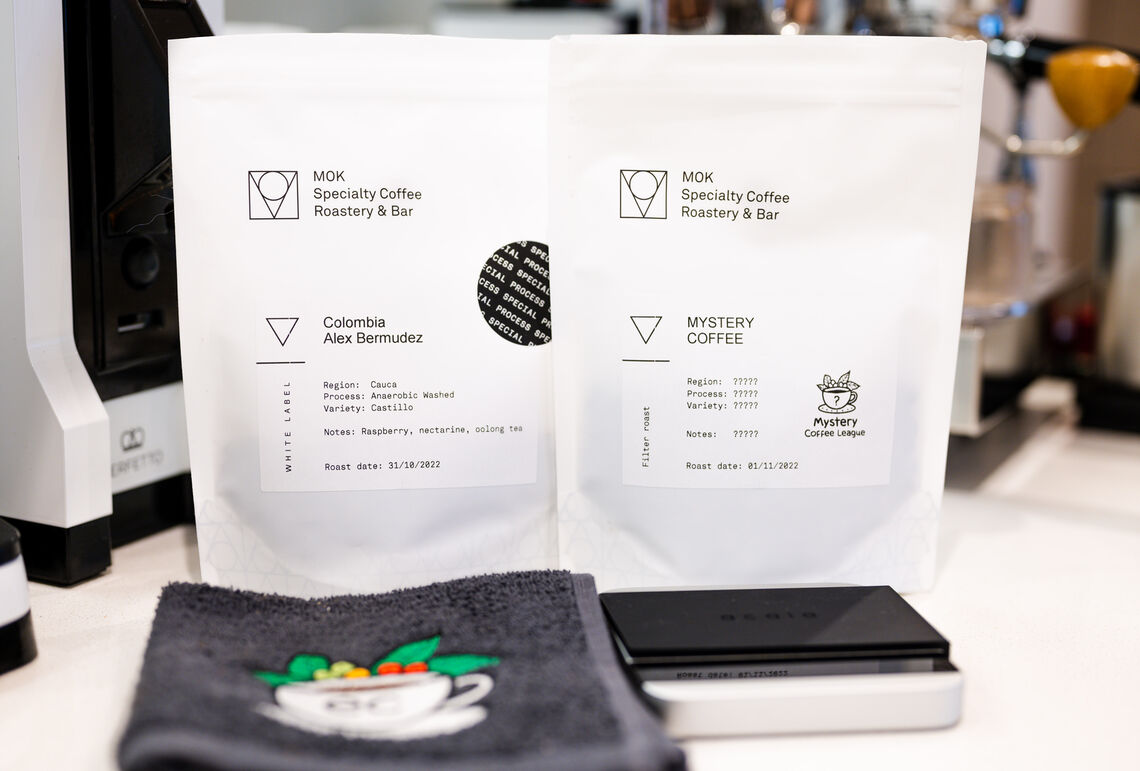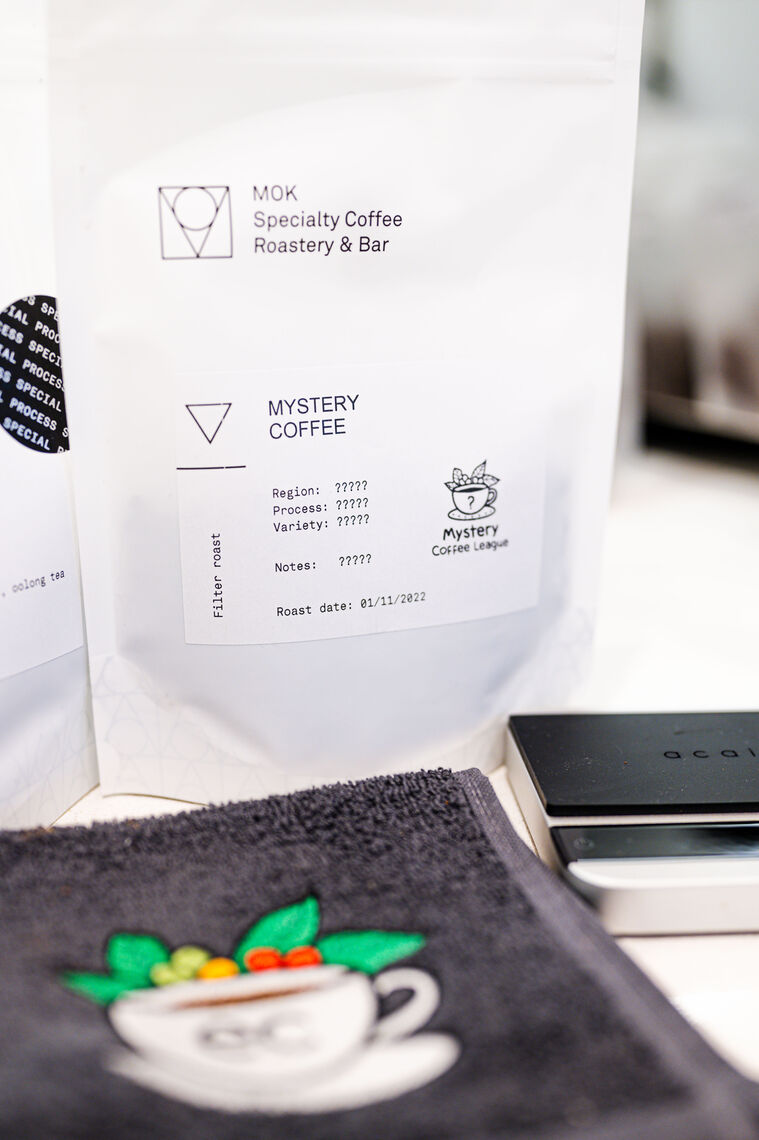MOK - Belgium 🇧🇪

Mystery Coffee

🇨🇷 Costa Rica Los Cipreses Max Salazar
Variety: Sudan Rume
Processing: Honey
Altitude: +1700 m.a.s.l.
Tasting notes: starfruit (mapped to grape), Artemisia abrotanum var. maritma (cola herb mapped to herb-like), nutmeg
Harvest: 2022
Score: 88
The Story of the Coffee from MOK
About the farm:
Anserma is located in the western area of the department of Caldas. It is an agricultural center where the cultivation of coffee stands out. The cooperative started operating in 1967. It has an extensive knowledge and experience in the commercialisation of coffee, and the support of the National Federation of Coffee Growers of Colombia and the Departmental Committee of Coffee Growers of Caldas. It operates in the municipalities of: Anserma, Risaralda, San José, Belalcázar and Viterbo. Its main purpose is the commercialization of coffee and other agricultural products seeking to promote and improve the economic, social, technical and cultural conditions of the associates, as long as as these are linked to the agricultural activity and especially to the production of coffee in all its areas. The cooperative has 2,083 associated coffee growers who cultivate excellent quality coffee with dedication and passion. Amongst coffee they also grow crops like sugarcane and bananas to sell for income.
About the coffee and processing methods on Max's farm:
Despite its size, Costa Rica has a diversity of climates that has led to a rich and varied coffee industry. Los Cipreses, which includes two farms and a mill, is located in the West Valley, which is influenced by Pacific weather patterns and is consequently drier than the Central Valley, producing a different coffee profile. Max Salazar runs the farms, San Cristobal (10ha) and La Isabella (13ha), named after his parents, alongside his two cousins and uncle Danilo. The business is named after the cypresses grown on a partnered farm that are sold as Christmas trees in December. Initially, the farms were mainly planted with Typica and Villa Sarchi varieties, but the family have bought more land and have planted Villalobos, Catuai, Caturra, Geisha, Ethiopian varieties, Sudan Rume, Millennium and SL28. New varieties – including L12-28, which is yielding good results – stay in the nursery for a year before being planted on the farms. The way the farms are structured has resulted in a of number of microclimates that require micro management, adapting processes for each slope and orientation. Winds are strong in the area (the region’s coffee was decimated by the 2015 hurricane Nate), so they have had to find solutions to decrease its impact on the coffee plants.
Before 2019, Max and his family used to deliver their cherries to a neighbouring mill, but in 2020 they decided to process part of their harvest themselves (most of it is processed as honeys), installing a small mill and a greenhouse. The processing plant, as well as the lowest part of the farm, is located at 1680 masl. During the harvest, 30 pickers extra are hired. Production since 2017 has been low, with the farms being hit by distinct climate challenges. Harvests used to be 600-700 fanegas (1 fanega = 250kg of cherries), but since 2017 they have been around 300 fanegas, with a very small middle-harvest volume (this volume is the most important for the producers as it is usually the best quality coffee). Despite the presence of crop disease and pests, Max doesn’t want to spray trees with chemicals, preferring to fight coffee rust with more natural methods, including a good fertilization plan and resistant varieties. He doesn’t use herbicides, and weeds are controlled with mulching.
The honeys and semi-washed lots rest in bags for a few hours before they are transferred to African (raised) beds. Yellow honeys are moved every hour, darker honeys less regularly. It takes 12 days to dry the honey lots. They also produce a few natural lots. Each year Max produces a ‘Special Black Honey’ coffee. To the freshly semi-pulped honey, Max adds ‘juice’ from a natural lot that was processed just before the honey. When that other natural lot is processed, the cherries are placed in a bag and the bag is hung so the juice coming out of the drying cherries will pour into a container. This juice is collected and added to the black honey to intensify the flavours. It’s a great way to use bi-products from other processes that would otherwise be discarded.
The family also has cattle in San Carlos (50 animals) and they share their time between the two production sites, but Max prefers the coffee and dedicates most of his time to it. He is involved in the specialty and barista scene in San José, and has developed many ideas to innovate processes and improve quality at the mill. He is looking for stable and durable relationships with a few clients rather than selling his coffee more widely.

Coffee of the Month
Filter and Espresso of the Month
The coffee winning the voting is
🇨🇴 Colombia Alex Bermudez
Variety: Castillo
Processing: Washed Anaerobic
Tasting notes: Raspberry, nectarine, oolong tea
